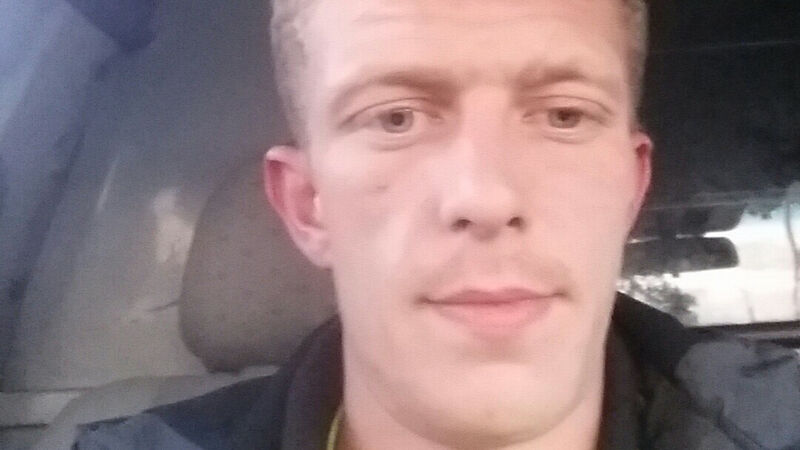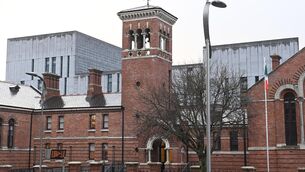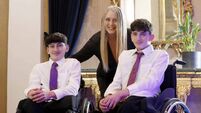Murderer of 90-year-old Paddy Lyons loses appeal against conviction

Ross Outram (pictured) who lost his appeal against conviction for the murder of 90-year-old Paddy Lyons.
Ross Outram, who was jailed for life for the murder of 90-year-old Paddy Lyons, has lost his appeal against conviction.
The Court of Appeal said that his suggestion that an elderly man who had sustained a serious beating resulting in a brain injury, then independently and unconnected to that assault, sustained a fatal fall, stretched credulity beyond rational limits.
Outram (30) of Ferryland, Waterford Road, Clonmel in Co. Tipperary, was found guilty in 2019 by a Central Criminal Court jury of murdering Mr Lyons at Loughleagh, Ballysaggart, Lismore, Co. Waterford, at a time unknown between February 23 and 26, 2017. He was the oldest man in his village.
His Central Criminal Court trial heard that the farmer's body was discovered slumped in his armchair at his home, with blood smeared down his face.
Mr Lyons had suffered multiple blows to his head and neck from a blunt weapon and had fractures of his hip joint, jawbone and ribs. The hip fracture was given as the cause of death.
He had lived alone on his farm, with no running water, and had "trusted everyone", the court heard. However, he became the victim of what trial judge Justice Paul Coffey described as a "truly shocking and outrageous" attack by Outram, who had previous convictions for burglary and assault.
Mr Lyons' home help, Mary Fennessy, who knew him for over 20 years said that "if anyone deserved a place in heaven it's Paddy".
"He was happy with simple things, had a great love for life and loved meeting people. He was a well-known, well-respected man of our community and he is greatly missed," she said in a victim impact statement.
The three-week trial heard medical evidence that Mr Lyons suffered a “stiffness or fusion” of his right shoulder during childbirth and could only keep it in one position.
However, Outram told gardaí in interviews that he had “fought back” after Mr Lyons hit him with a walking stick and shovel. He had lied in his first six interviews.
His barrister, Michael O’Higgins, argued that he had acted in self-defence and that he could not be made liable for "a fall" which saw Mr Lyons break his hip if it was unconnected to the original injuries inflicted on him by the defendant.
Mr Justice Coffey told the jury that in order to convict Outram of murder it must be satisfied beyond reasonable doubt that Mr Lyons’ fall and the fracture of his hip was either directly caused by the multiple blows inflicted on him or it was reasonably foreseeable that it was a natural consequence of these blows.
The jury found him guilty and he was sentenced to life in prison.
However, he appealed his conviction to the Court of Appeal earlier this year. Mr O’Higgins again argued that there was no proof that he caused the injury that led to the pensioner's death.
He said there was no basis for the jury to find beyond a reasonable doubt that the hip fracture was caused by the assault and not by an accidental fall after his client had left the scene.
He summarised the evidence of Assistant State Pathologist Dr Margot Bolster, saying she noted three categories of injury. These included a brain injury, which was not life-threatening, lacerations to the head, which would "probably" have caused death if left untreated, and the "shattering of the hip bone", which Mr O'Higgins said was the most significant injury.
Dr Bolster had suggested that the hip injury could have been caused by a fall and there was blood pooling in various areas around the house that suggested Mr Lyons was mobile after the beating.
While Dr Bolster had suggested that Mr Lyons could have fallen because he was dizzy or nauseous as a result of the beating, Mr O'Higgins said she accepted she could not be sure.
Mr O'Higgins said that there was another possibility, which was that he had tripped or fallen in a spontaneous event, independent of the attack.
“It was unfortunate, it was an accident,” he said.
Mr O'Higgins said that if a version of events favourable to the accused is reasonably possible then the jury must accept that version as the prosecution had failed to prove its case beyond reasonable doubt.
Mr O'Higgins also argued that the jurors should not have been allowed to carry out their own, independent examination of Mr Lyons's hat in circumstances where they were told no forensic examination of the hat had been carried out.
He had asked for the jury to be discharged on this issue but was refused by the trial judge.
Mr O'Higgins also sought to introduce new evidence gained since the trial that scientists at the Forensic Science Laboratory had found no blood on the hat.
John O'Kelly SC for the Director of Public Prosecutions said there is no evidence of a fall and even if there were, the jury was entitled to find that the fall was connected to the beating he had received from Outram. He also noted that Dr Bolster had said the injuries to the head contributed to his death.
Justice Isobel Kennedy, who sat with Justice John Edwards and Justice Patrick McCarthy, delivered a written judgement today.
“We cannot agree with Mr O’Higgins’ suggestion that it is not only necessary for the prosecution to prove that the appellant violently assaulted the deceased, but that the State must also prove that the appellant caused the deceased to fall, thus shattering his hip,” they wrote. “Mr Lyons had lived in his home for many years, it would certainly be quite remarkable if on the very night he was assaulted he spontaneously and independently of the attack suddenly fell over obstacles in a familiar environment."
They said that the possibility that he was able to move in the aftermath did not relieve the appellant of criminal responsibility.
“To suggest that an elderly man who had sustained a serious beating resulting in a brain injury, and then independently and unconnected to that assault, sustained another injury, stretches credulity beyond rational limits,” they added. “Dr Bolster emphasised that the hip fracture was not the sole cause of death. She did not accept that it was so significant a cause as to overwhelm the other contributing factors.”
The court did not agree with the appellant’s submission that the judge had invited the jury to speculate on matters that contributed to the fall.
“In fact, on the contrary the judge’s charge was not only a model of clarity and good sense, but in fact on occasion was most favourable to the defence,” they wrote.
“The trial judge’s charge was a model of fairness and clarity,” they added. “When the issue arose regarding the hat and the absence of evidence concerning the presence or absence of blood on it, the judge dealt with the matter in a fair and balanced way.” They accordingly dismissed the appeal.











